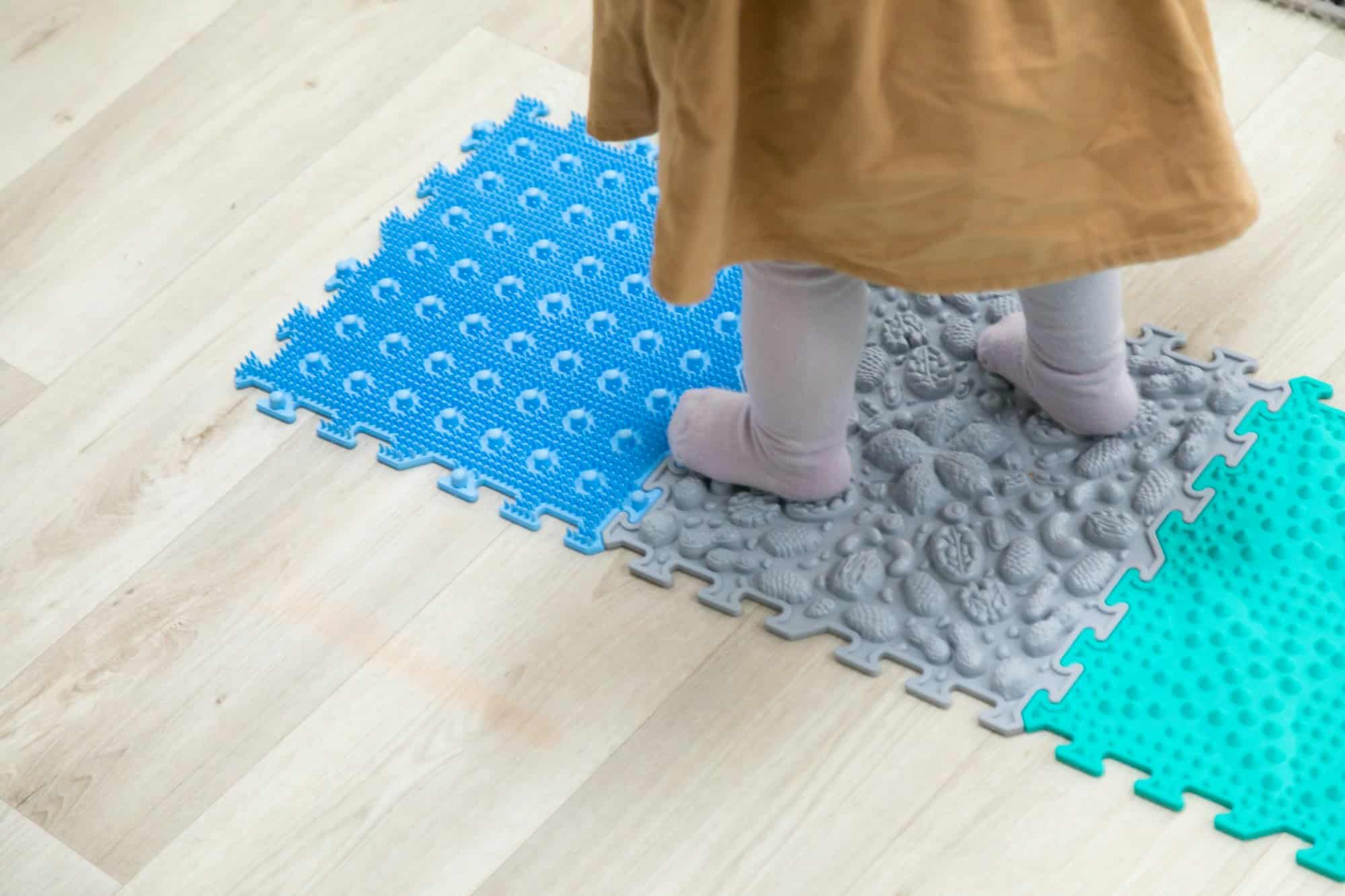How to Create a DIY Sensory Garden for Dogs with Visual Impairments?

For many people, their dogs are not merely pets. They are beloved family members, companions, and confidants. Unfortunately, just like humans, some dogs suffer from various sensory impairments, including visual issues. In such cases, it becomes even more crucial to provide an environment that stimulates their other senses. This is where a sensory garden comes into play. A sensory garden specifically for dogs is a space that can help visually impaired dogs enhance their other senses and enjoy their time outside. In addition to helping dogs, such gardens are also a great way for children to learn about plants and sensory activities.
Planning a Sensory Garden for Dogs
Before you roll up your sleeves and begin the process of creating a sensory garden, it’s crucial to plan. This involves considering the available space, the needs of your dog, and of course, the plants that will go into the garden.
A lire également : How to Develop a Positive Crate Training Experience for a Rescue Basset Hound?
First, consider the area you have. Is it a small corner of your backyard or a larger space? You don’t need a vast area to create a stimulating sensory garden. Even a small space, when thoughtfully designed, can provide a rich sensory experience for your dog.
Next, consider the needs of your dog. Every dog is unique with different sensory preferences. Some dogs will love to play with water, while others will be more interested in sniffing plants or digging. Spend time observing your dog and understanding its likes and dislikes to incorporate elements that will appeal to it.
Dans le meme genre : What’s the Best Way to Socialize a Puppy in a Rural Area Without a Dog Park?
Finally, decide on the plants. The plants you choose should be safe for dogs and provide different sensory experiences. For instance, herbs like rosemary and thyme are great choices because they are safe for dogs and have strong scents that can stimulate their olfactory senses.
Choosing the Right Plants
The plants you choose can make a significant difference in the sensory experience your garden provides. Dogs have an incredible sense of smell, so incorporating plants with aromatic qualities will undoubtedly enrich your dog’s experience.
Consider adding herbs like basil, mint, or lavender. These plants not only provide a wonderful aroma but are also safe for dogs if they decide to have a nibble. In addition to herbs, consider adding plants with different textures, such as grasses, ferns, and succulents. These can provide a variety of tactile experiences for your dog.
However, remember to avoid plants that are toxic to dogs. Some common garden plants, like azaleas, tulips, and daffodils, are harmful to dogs. Always double-check the safety of any plant before adding it to your dog’s sensory garden.
Incorporating Water and Play Elements
While plants play a crucial role in a sensory garden, they aren’t the only elements to incorporate. Water features and play elements can also greatly enrich the sensory experience for your dog.
For water features, consider a small fountain, a birdbath, or even a simple dish of water. The sound of water can be soothing for dogs, and it provides an opportunity for them to drink when they are thirsty. If your dog enjoys water play, a small paddling pool can be a fun addition.
Play elements are also important. This could be as simple as adding a sandbox for dogs that enjoy digging. You could also consider a raised bed filled with safe, chewable objects like balls or chew toys. Just be careful to avoid small objects that could be a choking hazard.
Helping Your Dog Navigate the Space
For dogs with visual impairments, navigating a new space can be challenging. Therefore, it’s essential to consider how you can help your dog understand and enjoy the garden safely.
Adding textures and scents can guide your dog through the garden. For instance, you could line the paths with aromatic plants or textured materials like pebbles or bark. This will create a sensory map that your dog can follow.
It’s also helpful to keep the layout of the garden consistent. This allows your dog to memorize the garden’s layout over time, helping them to navigate the space confidently.
Engaging Children in the Process
Creating a sensory garden for your dog is not just beneficial for the dog, but it can also be a great activity for your child. Children can learn about different plants, their effects, and the concept of sensory experiences.
Involve your child in the planning process. Let them help decide what elements to add and where to place them. They can even assist with planting, providing an opportunity for them to learn about gardening.
Remember to explain the purpose of each element, highlighting its sensory properties and how it will help the dog. This can instill empathy and understanding in children about the needs of visually impaired animals.
In the end, a sensory garden is more than just a play area for your dog. It’s a place where your dog can explore, learn, and enjoy. A carefully planned and well-constructed sensory garden will not only stimulate your dog’s senses but can also provide a soothing and enjoyable environment for them to spend their time.
Prioritizing Safety for Your Sensory Garden
Safety should always be a top priority when creating a sensory garden for a visually impaired dog. This primarily involves making the environment hazard-free, with all elements of the garden designed to be dog-friendly.
Safety begins with the choice of plants. As stated earlier, some plants can be toxic to dogs. Therefore, it’s imperative to conduct a thorough research or consult with a professional, to ensure that all the plants in your sensory garden pose no risk to your dog’s health. Additionally, while creating a sensory map with textured materials, you should avoid sharp objects or rough materials that could hurt the dog’s paws.
Next, the placement of elements in your sensory garden should be carefully thought out. Remember, a visually impaired dog will rely heavily on memory and sensory input to navigate the space. Therefore, the layout should remain consistent, with no sudden changes that could confuse or frighten the dog. If you must modify the garden, introduce the changes gradually, allowing the dog time to adjust.
It’s also important to consider the height of elements. For instance, a water feature that’s too deep could be a drowning hazard, while a raised bed that’s too high could lead to falls. Consider your dog’s size and capabilities when incorporating these elements.
Finally, you should regularly monitor your dog in the sensory garden, especially in the early stages. Even with careful planning, you can’t anticipate all potential issues. Monitoring will help you identify any areas that cause difficulty or discomfort for your dog, allowing you to make necessary adjustments.
Conclusion: The Joy of Sensory Gardens
Creating a sensory garden for a dog with visual impairments can be a rewarding endeavour for both you and your furry friend. Not only does it provide a safe and stimulating environment for your dog, but it also offers numerous learning opportunities for children and adults alike.
Involving children in the process can help them understand the needs of visually impaired animals, fostering empathy and compassion. It also introduces them to the benefits of sensory play, demonstrating how sensory input can aid in learning and development.
For adults, setting up a sensory garden is an opportunity to learn about dog-friendly plants and create a soothing environment for their beloved pet. It also presents a chance to observe the incredible sensory capabilities of dogs, gaining a deeper appreciation for these remarkable animals.
In many ways, a sensory garden is more than a play area for a dog. It’s a sanctuary that caters to their sensory needs, allowing them to explore, learn and enjoy in safety. At the same time, it’s a unique educational tool that promotes understanding and empathy.
Whether you have a small corner in your backyard or a larger space, creating a sensory garden for a dog with visual impairments is a task that brings numerous benefits. With thoughtful planning and a touch of creativity, you can transform any space into a sensory haven for your furry companion.
